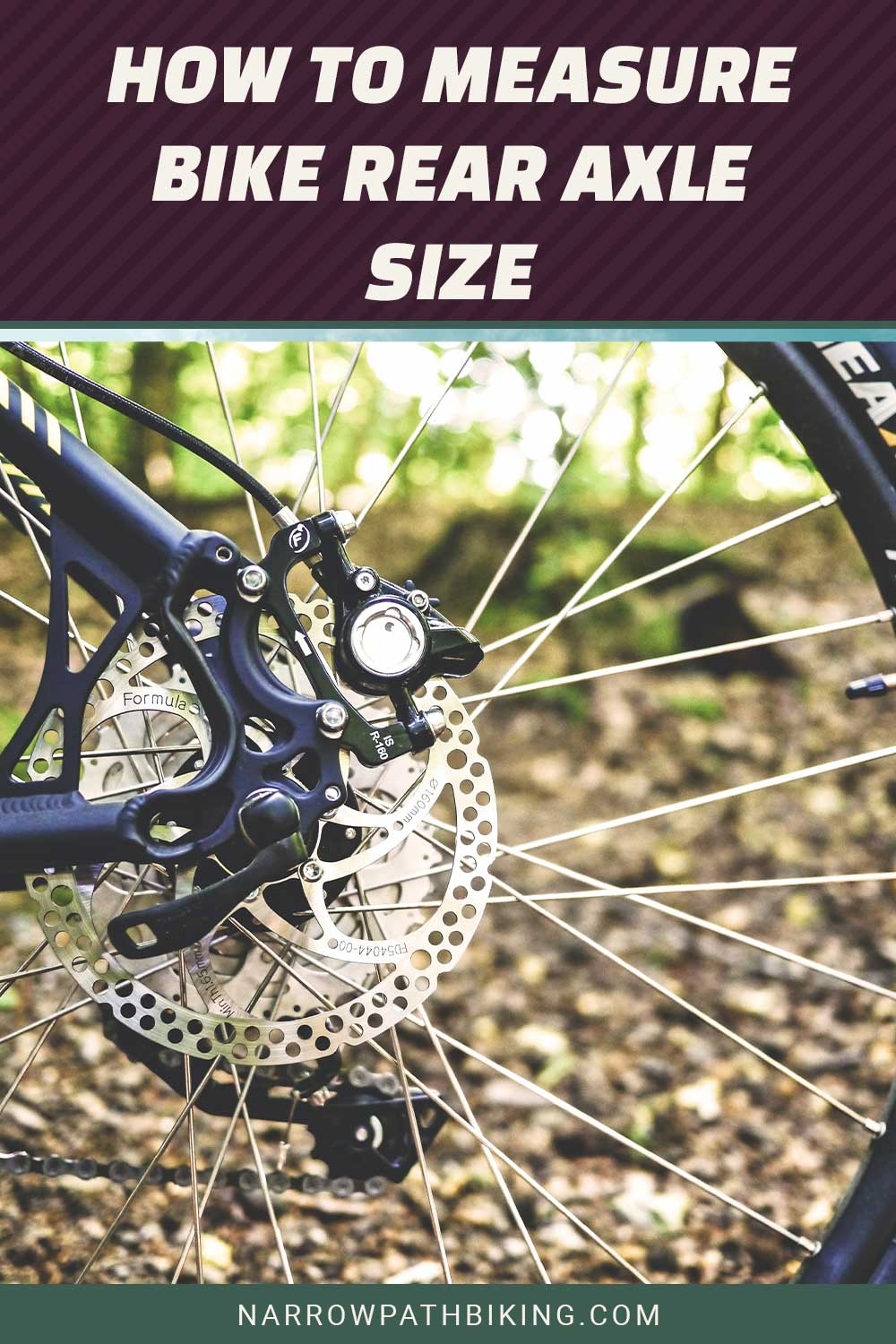When it comes to measuring them, there are four main numbers needed when it comes to replacing them or making any adjustments. First, you’ll need to know the axle diameter, thread pitch, and thread length.
This can easily be done with a metric ruler or caliper. To ensure that you’re able to replace this part or make the necessary adjustments, we wanted to look at everything you need to know about measuring your rear axle. So let’s get started, shall we?
Are Bike Axles Universal?
It would be so much easier if bike axles were universal, but they are not. Not only are the axles on the market today not standard, but they continue to change as mountain bikes evolve.
There are actually four different types of axles that you can deal with when you purchase a mountain bike.
- Quick release
- Non-boost thru-axle
- Boost thru-axle
- Superboost thru-axle
Each of these options will of course, need to be measured and could potentially have different measurements depending on the brand and the size of the bike.
What Size Bike Axles are There?
Though there are multiple types of axles available for mountain bikes, and these can mean varying sizes, a few standard sizes are more popular than others.
For instance, with a thru-axle style, you’re probably going to find that most of them measure approximately 142 millimeters long with a diameter of 12 millimeters.
On the other hand, if you’re dealing with a quick-release option, you may find that your world is dealing more often with 130 millimeters in width when it comes to the rear axles.
You see, though, there are several different styles and multiple different options on a whole. You’re going to find these to be the ones you find most often.
Is There a Special Tool for Measuring it?
When it comes to actually measuring them, there is no necessary special tool. Instead, the tools used in measuring your rear axle are some that you may have to lie around in your garage that you’ve used in other projects.
The two main tools you can use to measure are a well on the rules or a set of calipers. So the good news is that you’ll be able to find these tools rather easily. This is nice since many other mountain biking accessories can be quite pricey.
Things You Need to Know Before You Start
When it comes to things you need to know before you get started measuring your rear back axle, there are a few points that we wanted to really stress. The very first thing is you need to understand your bike specs.
This means Googling to see what exactly your bike is all about. This means understanding that the frame axle information is not the fork itself. But this is not the only information you need to ensure you understand the thread pitch, length, and width.
Having all this information on hand will help you determine whether you even need to measure or not. The truth is that oftentimes you can find the information printed on the bike itself or in the manual.
Common Mistakes to Avoid
The most common mistake that is made when measuring a rear bike axle is assuming that all bikes are the same. You also need to ensure that you are using the proper tools and not just relying on the metrics you find in your research.
The research is important and can get you a good place to start. Making sure that you take the time to measure them is important. On top of that, you need to understand that you don’t just need to measure the width and the length but also the thread.
If you choose an axle that has the wrong pitch, it won’t matter if it’s the right size because it won’t fit into the bike.
Final Thoughts on How to Measure Bike Rear Axle Size
There are plenty of reasons why you may need to measure the rear axle period from, as we said, customization to dissemble replacement of the part. It is vital to ensure that you have the right metrics when you head to the store to purchase it.
Otherwise, you’re going to be wasting time and probably some money. So take the time and measure the length, width, and thread size.

